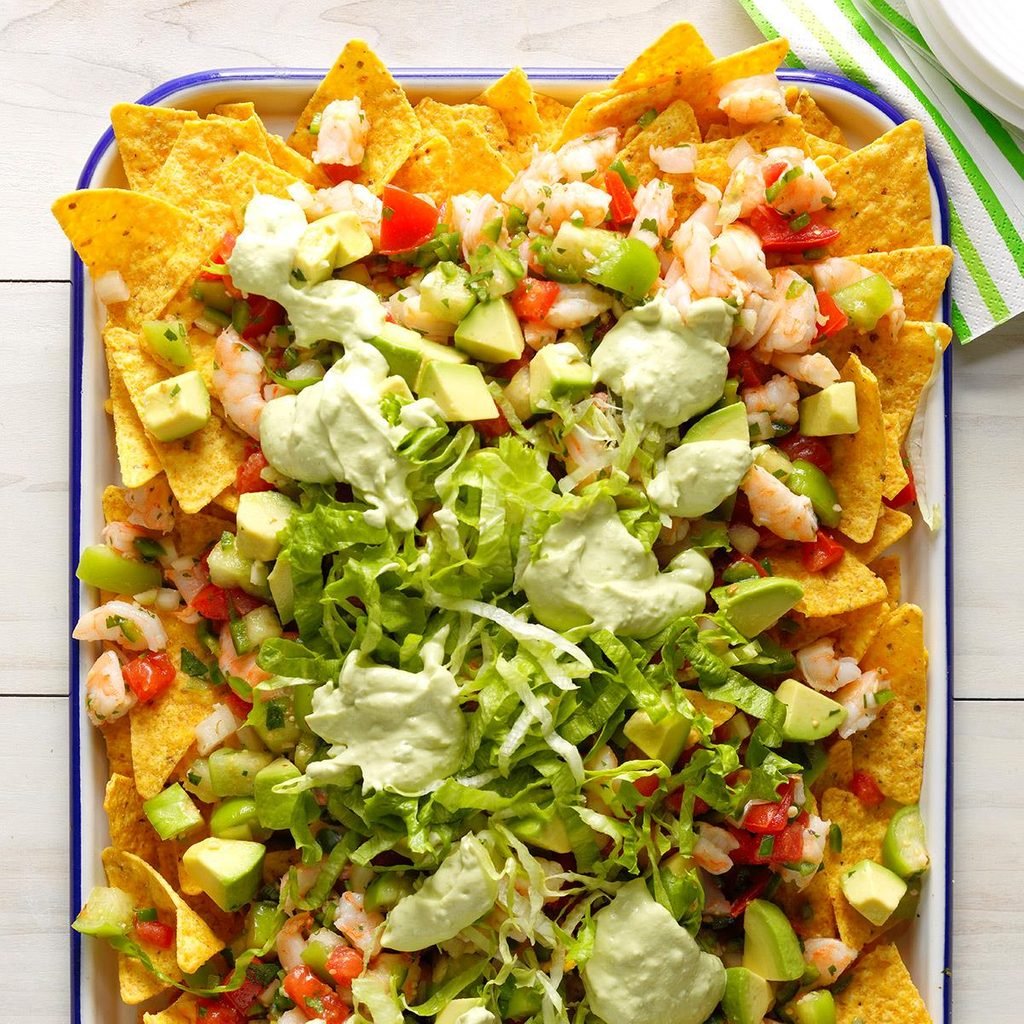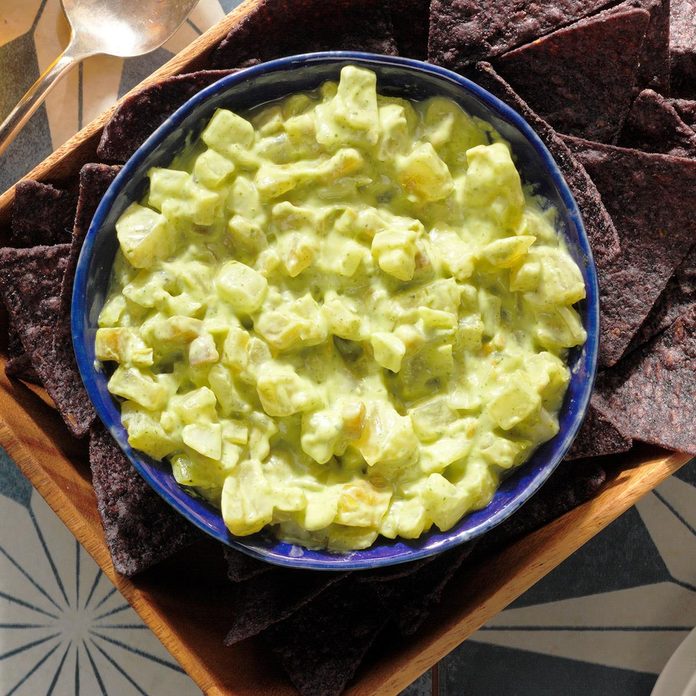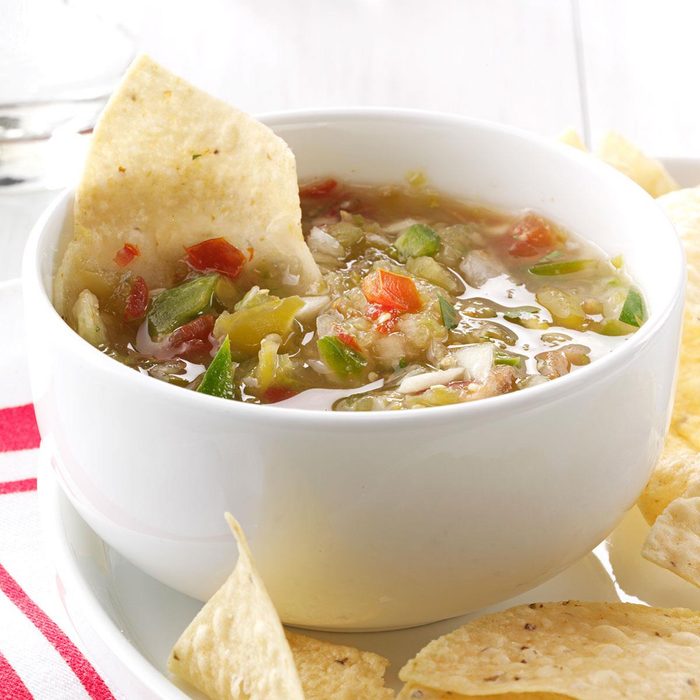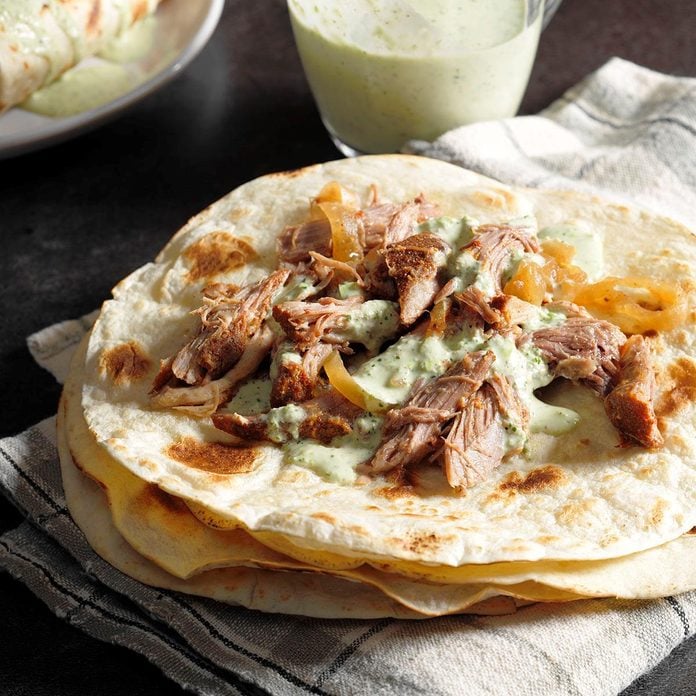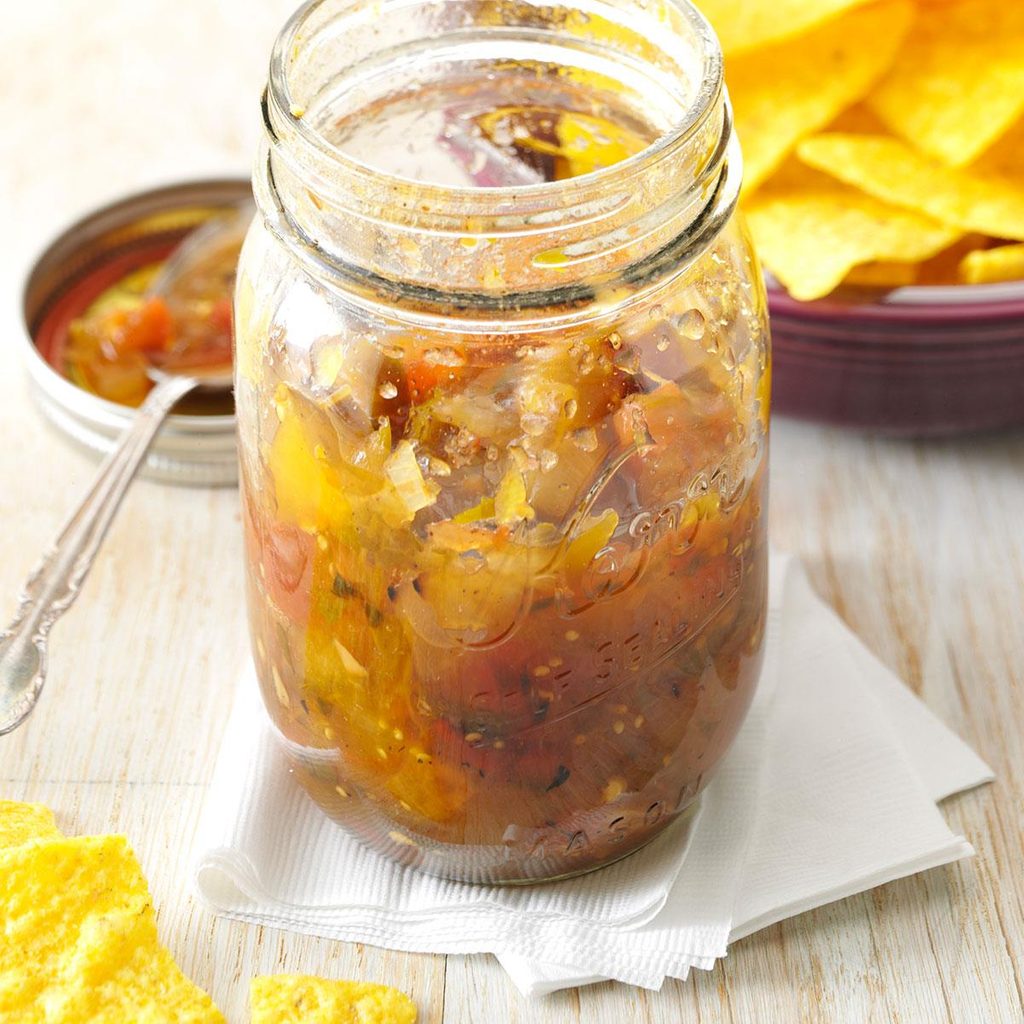What Are Tomatillos and How to Use Them
Updated: Dec. 15, 2021
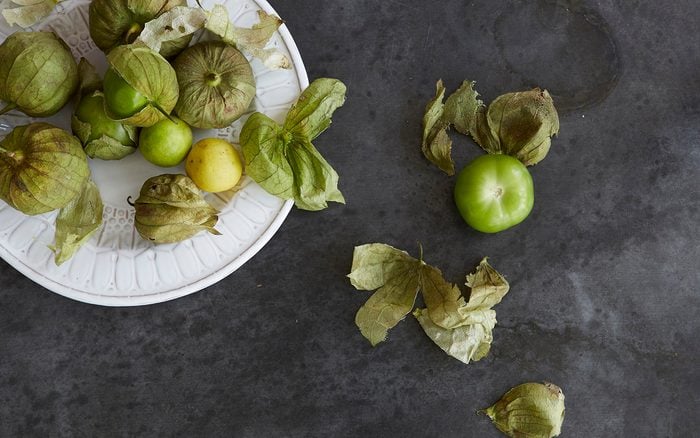
A tomatillo may look like an unripe red tomato, but they have an identity of their own. They're often found in Mexican cooking, but using tomatillos is a great way to add bright flavor to salads, sauces, meat dishes and more.
I was a little intimidated the first time I saw a tomatillo at the farmers market. At first, I thought they were unripe green tomatoes, but the farmer explained that tomatillos are a unique ingredient of their own.
From there, it was all questions: What’s the deal with the paper husk—do I peel it first, or should I cook tomatillos in the husk? Why are they so waxy after you remove the peel? And why is a tomatillo so much dryer and denser inside than a tomato?
After some gentle encouragement, I picked up a few and brought them home to experiment. As soon as I learned how to prep and cook tomatillos, I was absolutely hooked by their bright, tangy flavor and meaty texture.
What Is a Tomatillo?
Tomatillo (also called a husk tomato) is an annual plant in the nightshade family (along with tomatoes, peppers, eggplant and potatoes). While they’re related to tomatoes, tomatillo plants don’t produce juicy fruit. Instead, tomatillos are small, round and firm with a dense interior, making them look (and feel) like unripe tomatoes. They’re often bright green, although some varieties of ripe tomatillos turn yellow or purple.
Tomatillos are unique because of the thin, papery husk that forms around the fruit to protect it as it ripens. That makes them look like a cape gooseberry (also known as a ground cherry or husk cherry). No matter how ripe they get, a tomatillo will never sweeten like ground cherries or tomatoes, though. Instead, they have a bright, extremely tart flavor that’s somewhat reminiscent of limes. When roasted, tomatillos lose that acidic edge and become a little sweeter.
What Are Tomatillos Used For?
Tomatillos are native to Mexico and Central America, so they’re often found in Mexican recipes. When enjoyed raw, tomatillo’s tart flavor is striking. They’re best used in tomatillo salsa, or blended with spicy peppers (also known as salsa verde). They can also be chopped finely and added to salads or as a garnish for rich meat dishes in place of lemon juice.
When cooked, tomatillo’s flavor mellows and sweetens. We love roasting tomatillos in the oven, sticking them under the broiler or popping them on the grill before making salsa to deepen and enrich the dish. You can also use tomatillos to make soup like pozole verde or chicken tomatillo soup.
Chopped tomatillos make an excellent accompaniment for rich meat dishes, especially braised pork, and they’re a fantastic addition to casseroles or enchiladas. Don’t be afraid to treat them simply, chopping them in half and grilling them for a fun topping for chicken or fish. We also love simmering them in water and blending with buttermilk and avocado to make a tasty salad dressing.
How to Prep Tomatillos
When you get home from the market, place tomatillos in a paper bag with the husks intact. Store them in the crisper drawer in the refrigerator, where they’ll last for two to three weeks.
When you’re ready to enjoy them, peel back the paper husks with your fingers. The fruit inside will be a little waxy, so give it a gentle scrub with a soft brush under cold, running water. Then, chop tomatillos in half for roasting or the grill, or toss them whole into a blender for making salsa.
Are Tomatillos Toxic?
There’s some debate about whether unripe tomatillos are toxic. While we can’t say for certain whether that’s true or not, we can say with absolute certainty that unripe tomatillos taste terrible. They’re extremely sour and bitter!
Either way, we’ll always err on the side of caution and recommend only consuming ripe tomatillos. Look for tomatillos with split paper lanterns and deep green color. Some tomatillo varieties turn yellow or purple when they’re ripe.
Like other nightshade vegetables, the rest of the plant is inedible—the leaves, stems and flowers. The husks aren’t edible, either, so you’ll want to toss those out before cooking or consuming tomatillos.

